
Malay is an Austronesian language that is an official language of Brunei, Indonesia, Malaysia, and Singapore, and that is also spoken in East Timor and parts of the Philippines and Thailand. Altogether, it is spoken by 290 million people across Maritime Southeast Asia.
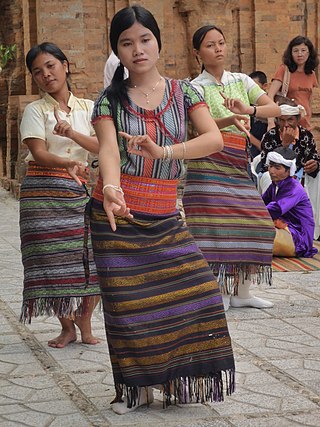
The Chams or Champa people are an Austronesian ethnic group in Southeast Asia, and indigenous people of Central Vietnam.

The Malacca Sultanate was a Malay sultanate based in the modern-day state of Malacca, Malaysia. Conventional historical thesis marks c. 1400 as the founding year of the sultanate by King of Singapura, Parameswara, also known as Iskandar Shah, although earlier dates for its founding have been proposed. At the height of the sultanate's power in the 15th century, its capital grew into one of the most important transshipment ports of its time, with territory covering much of the Malay Peninsula, the Riau Islands and a significant portion of the northern coast of Sumatra in present-day Indonesia.

The Orang Laut are several seafaring ethnic groups and tribes living around Singapore, peninsular Malaysia and the Indonesian Riau Islands. The Orang Laut are commonly identified as the Orang Seletar from the Straits of Johor, but the term may also refer to any Malayic-speaking people living on coastal islands, including those of Mergui Archipelago islands of Myanmar and Thailand, commonly known as Moken.
The Maniq or Mani are an ethnic group of Thailand. They are more widely known in Thailand as the Sakai, a controversial derogatory term meaning 'barbarism'. They are the only Negrito group in Thailand and speak a variety of related Aslian languages, primarily Kensiu and Ten'edn. They have their own language, culture, and no alphabet.
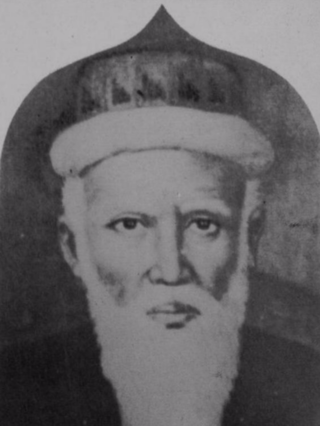
Nuruddin ibn Ali ar-Raniri was an Islamic mystic and scholar from Rander in Surat province of Gujarat, in India, who worked for several years in the court of the sultan of Aceh in what is now Indonesia. He was the most prolific of the authors of the Acehnese court, and helped contribute to its international reputation as a center of scholarship. His work was considered the oldest Muslim scholarship of South east Asia.

Malaysian Malays are Malaysians of Malay ethnicity whose ancestry originates wholly or partly in the Malay world. In 2023 population estimate, with the total population of 17.6 million, Malaysian Malays form 57.9% of Malaysia's demographics, the largest ethnic group in the country. They can be broadly classified into two main categories; Anak Jati and Anak Dagang.

In the history of Brunei, the Sultanate of Brunei or simply Brunei was a Malay sultanate, centred in Brunei on the northern coast of Borneo island in Southeast Asia. Brunei became a sovereign state around the 15th century, when it grew substantially after the fall of Malacca to the Portuguese, extending throughout coastal areas of Borneo and the Philippines, before it declined in the 17th and 18th centuries. The first ruler or sultan of Brunei was a Muslim. It became a British protectorate in the 19th century.
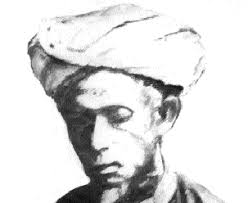
Raja Ali Haji bin Raja Haji Ahmad (1808/9–1869/75) was a 19th-century Bugis-Malay historian, poet and scholar who wrote Tuhfal al-Nafis. He was elevated to the status of National Hero of Indonesia in 2004. Haji has been described as one of the most important Malay writers of the 19th century.
Tun Habib Abdul Majid bin Tun Ali bin Tun Muhammad was the 19th Bendahara of the Johor Sultanate during the late 17th century. The Johor Sultanate under Sultan Mahmud Shah II saw a gradual decline of royal authority during Tun Habib's tenure as the Bendahara of Johor. Internal challenges within the Sultanate faced by Tun Habib consolidated his power as the Bendahara, in which case the Bendahara monopolised legitimate authority over the Johor Sultanate by the 1690s. After his death, Tun Habib's descendants spanned throughout the Johor Sultanate and established ruling houses in Riau-Lingga, Johor, Pahang and Terengganu.
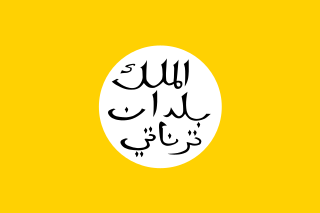
The Sultanate of Ternate, previously also known as the Kingdom of Gapi is one of the oldest Muslim kingdoms in Indonesia besides Tidore, Jailolo, and Bacan. The Ternate kingdom was established by Momole Cico, the first leader of Ternate, with the title Baab Mashur Malamo, traditionally in 1257. It reached its Golden Age during the reign of Sultan Baabullah (1570–1583) and encompassed most of the eastern part of Indonesia and a part of southern Philippines. Ternate was a major producer of cloves and a regional power from the 15th to 17th centuries.

Malayness is the state of being Malay or of embodying Malay characteristics. This may include that which binds and distinguishes the Malay people and forms the basis of their unity and identity. People who call themselves Malay are found in many countries in Southeast Asia, united by a notional shared identity but divided by political boundaries, divergent histories, variant dialects and peculiarities of local experience. While the term 'Malay' is widely used and readily understood in the region, it remains open to varying interpretations due to its varied and fluid characteristics. 'Malay' as an identity, or nationality, is considered one of the most challenging and perplexing concepts in the multi-ethnic world of Southeast Asia.
Barbara Watson Andaya is an Australian historian and author who studies Indonesia and Maritime Southeast Asia. She has also done extensive research on women's history in Southeast Asia, and of late, on the localization of Christianity in the region. She teaches courses in Asian Studies as a full professor at the University of Hawaiʻi at Mānoa, and has served as director of the university's Center for Southeast Asian Studies. She was President of the American Association for Asian Studies from 2005 to 2006.
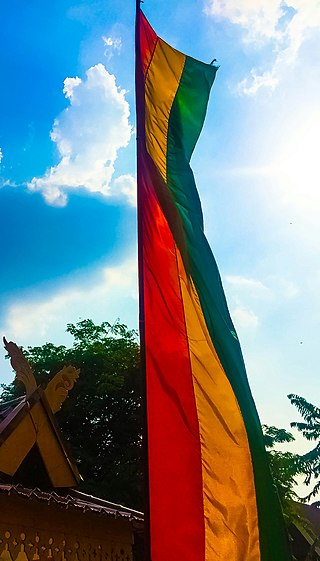
Malayisation or Malayization is a process of assimilation and acculturation, that involves acquisition or imposition of elements of Malay culture, in particular, Islam and the Malay language, as experienced by non-Malay populations of territories fully controlled or partially influenced by historical Malay sultanates and modern Malay-speaking countries. It is often described as a process of civilisational expansion, drawing a wide range of indigenous peoples into the Muslim, Malay-speaking polities of Maritime Southeast Asia. Examples of Malayisation have occurred throughout Asia including in Brunei, Cambodia, Indonesia, Malaysia, Singapore, and Sri Lanka.

The Malay world or Malay realm is a concept or an expression that has been used by different authors and groups over time to denote several different notions, derived from varied interpretations of 'Malay' either as an ethnic group, as a racial category, as a linguistic group or as a cultural group. The use of the term Malay in much of the conceptualisation is largely based on the prevalent Malay cultural influence, manifested in particular through the spread of the Malay language in Southeast Asia as observed by different colonial powers during the Age of Discovery and spread of Islam. The term remains highly controversial outside of Malay-speaking areas and as such is considered politically charged and irredentist rather than purely cultural.
A good number of inscriptions written in Sanskrit language have been found in Malaysia and Indonesia. "Early inscriptions written in Indian languages and scripts abound in Southeast Asia. [...] The fact that southern Indian languages didn't travel eastwards along with the script further suggests that the main carriers of ideas from the southeast coast of India to the east - and the main users in Southeast Asia of religious texts written in Sanskrit and Pali - were Southeast Asians themselves. The spread of these north Indian sacred languages thus provides no specific evidence for any movements of South Asian individuals or groups to Southeast Asia.

Syair Siti Zubaidah Perang Cina is a 19th-century syair (poem) by an unknown author. Following a gender disguised woman who conquers China to save her husband, the syair has been argued to be based on historical events.
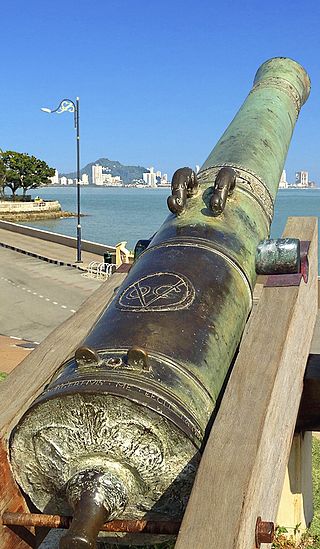
The Seri Rambai is a seventeenth-century Dutch cannon displayed at Fort Cornwallis in George Town, the capital city of the Malaysian state of Penang and a UNESCO World Heritage Site. It is the largest bronze gun in Malaysia, a fertility symbol and the subject of legends and prophecy.

The Kingdom of Banggai was a petty kingdom in present-day Central Sulawesi, Indonesia. It was based around the Banggai Islands and the eastern coast of Sulawesi, centered at the island of Banggai. For a significant part of its history, the kingdom was under the overlordship of the Sultanate of Ternate.














